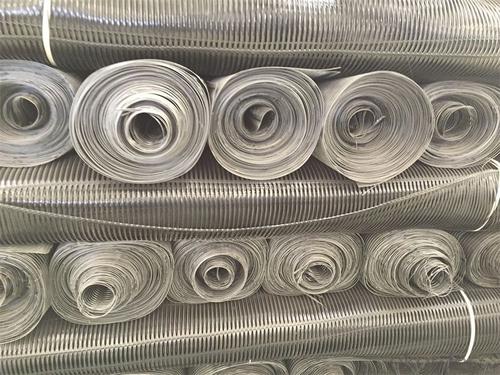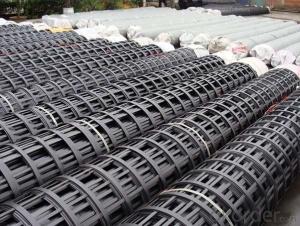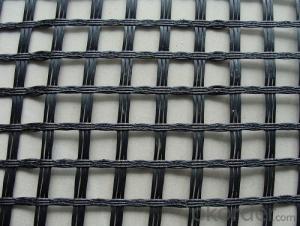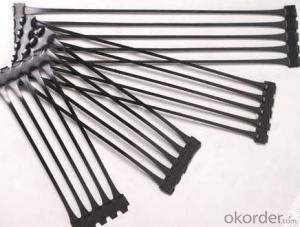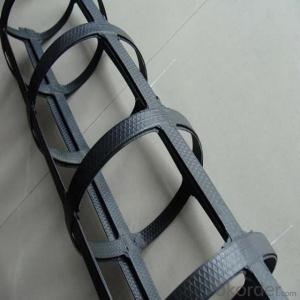Biaxial Geogrids - Steel-Plastic Fiberglass PP/PET Materials Geogrid 10/10KN-140/160KN for Coal Mine
- Loading Port:
- Qingdao
- Payment Terms:
- TT OR LC
- Min Order Qty:
- 5000 m²
- Supply Capability:
- 2000000 m²/month
OKorder Service Pledge
OKorder Financial Service
You Might Also Like
Specifications of Geogrid:
Plastic biaxial geogrid with high strength steel wire (or other fiber), through special processing, and polyethylene (PE) or polypropylene (PP), and adding other assistants, by extrusion into composite type high tensile belt, and the surface is rough textured, for high strength reinforced geotextile strips. The single band, the longitudinal, transverse certain space preparation or clamping arrangement, with special reinforcement welding technology welding the connection point bonding and molding, is reinforced with Geogrid.
Applications of Geogrid:
Make reinforce treatment for various kinds of soft soil foundation to evenly distribute load stress and reduce uneven settlement, not easy to generate static electricity, and flammability property good in the coal mine. It is easy to wash coal.
Used in highway, railway, port, airport and municipal project. Support in the recovery working face of coal mine and roadway in the coal mine.
Index Properties | Test Method | Unit | GG1515 | GG2020 | GG3030 | GG4040 |
MD TD | MD TD | MD TD | MD TD | |||
Polymer | -- | -- | PP | PP | PP | PP |
Minimum Carbon Black | ASTM D 4218 | % | 2 | 2 | 2 | 2 |
Tensile Strength@ 2% Strain | ASTM D 6637 | Kn/m | 5 5 | 7 7 | 10.5 10.5 | 14 14 |
Tensile Strength@ 5% Strain | ASTM D 6637 | Kn/m | 7 7 | 14 14 | 21 21 | 28 28 |
Ultimate Tensile Strength | ASTM D 6637 | Kn/m | 15 15 | 20 20 | 30 30 | 40 40 |
Strain @ Ultimate Strength | ASTM D 6637 | % | 13 10 | 13 10 | 13 10 | 13 10 |
Structural Integrity | ||||||
Junction Efficiency | GRI GG2 | % | 93 | 93 | 93 | 93 |
Flexural Rigidity | ASTM D 1388 | Mg-cm | 700000 | 1000000 | 3500000 | 10000000 |
Aperture Stability | COE Method | mm-N/deg | 646 | 707 | 1432 | 2104 |
Dimensions | ||||||
Roll Width | -- | M | 3.95 | 3.95 | 3.95 | 3.95 |
Roll Length | -- | M | 50 | 50 | 50 | 50 |
Roll Weight | -- | Kg | 39 | 50 | 72 | 105 |
MD denotes Machine direction. TD denotes transverse direction. | ||||||
Property of Geogrid:
1.) Improve roadbed bearing capacity,enlarge road lifetime.
2.) Prevent road collapse and crack
3.) Prevent soil and water loss in slope
4.) Could replace steel-plastic geogrid in coal mine.
FAQ:
1. How to order your geogrid ?
a). Tensile strength in warp & weft direction
b). Grid size
c). Width and length
d). Quantity
2. Payment term .
a) TT
b) LC AT SIGHT
c) cash
d) 30% contact value as deposit ,the blance 70% be paid after received the copy of bl .
3. Delivery time
a) 19-25 days after received your depsit .
4. What is MQQ ?
a) 2500 m2 as MQQ , we can also produce sample for you .
Geogrid Show:




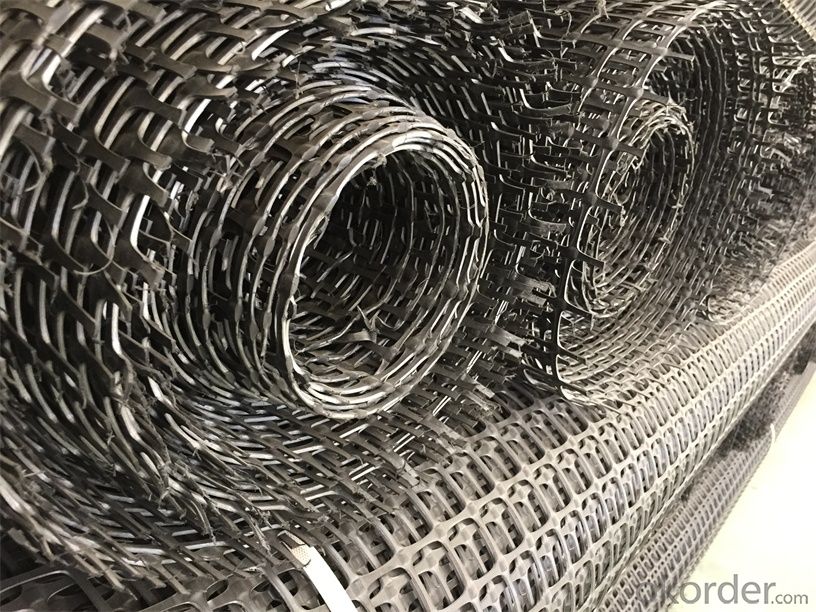
- Q: Can geogrids be used in soil stabilization for slopes?
- Yes, geogrids can be used in soil stabilization for slopes. Geogrids are commonly used to reinforce and stabilize soil, especially on slopes, by providing tensile strength and preventing soil movement. They can improve the stability of slopes by distributing loads more evenly and reducing the risk of erosion or landslides.
- Q: Can geogrids be used in underwater applications?
- Yes, geogrids can be used in underwater applications. They are often employed in marine construction projects, such as offshore breakwaters, submerged revetments, and coastal protection systems. Geogrids are designed to withstand the harsh conditions of underwater environments and provide stability to soil or fill materials, preventing erosion and improving the overall performance of underwater structures.
- Q: What are the potential drawbacks of using geogrids?
- One potential drawback of using geogrids is their high initial cost compared to traditional construction materials. Additionally, geogrids require skilled installation and may have limited availability in certain regions. There is also a risk of improper installation or maintenance, which can lead to reduced effectiveness or failure of the geogrids. Moreover, the long-term durability of geogrids is still being studied, and their performance can be influenced by factors such as UV radiation and chemical exposure.
- Q: How do geogrids improve the load transfer in road pavements?
- Geogrids improve the load transfer in road pavements by providing reinforcement and stabilization to the layers of the pavement. They are typically made of high-strength materials and are placed within the pavement layers to distribute the load more evenly, reduce deformation, and enhance the overall structural integrity of the road. This helps in preventing cracks, rutting, and other pavement distresses, ultimately extending the lifespan and improving the performance of the road.
- Q: Are geogrids effective in preventing soil erosion on slopes with vegetation?
- Yes, geogrids are effective in preventing soil erosion on slopes with vegetation. Geogrids provide reinforcement and stabilization to the soil, preventing it from being washed away during heavy rainfall or strong winds. They also help improve the overall stability of the slope, reducing the risk of soil erosion and maintaining the integrity of the vegetation cover.
- Q: Are geogrids suitable for use in ground reinforcement for residential developments?
- Yes, geogrids are suitable for use in ground reinforcement for residential developments. Geogrids provide stability and reinforcement to soil, preventing erosion and maintaining the integrity of the ground. They are commonly used in various applications, including driveways, parking areas, and retaining walls, making them a reliable choice for residential developments.
- Q: What is the effect of strain rate on geogrid behavior?
- The effect of strain rate on geogrid behavior is that it influences the mechanical properties and performance of the geogrid material. Higher strain rates typically result in increased stiffness and strength, as well as reduced deformation and creep behavior. This is due to the time-dependent nature of geogrids, where faster loading rates induce a more immediate response from the material. Therefore, understanding and accounting for strain rate effects is crucial in designing and predicting the behavior of geogrids in various engineering applications.
- Q: How do geogrids improve the performance of geotextile-reinforced slopes for erosion control?
- Geogrids improve the performance of geotextile-reinforced slopes for erosion control by adding an additional layer of stability and strength. They provide enhanced soil confinement, preventing soil movement and erosion. This reinforcement helps to distribute the load more evenly across the slope, reducing the risk of slope failure. Additionally, geogrids increase the tensile strength of the geotextile fabric, enhancing its ability to withstand stress and maintain its integrity over time. Overall, geogrids significantly improve the erosion control capabilities of geotextile-reinforced slopes, making them more effective and durable in preventing soil erosion.
- Q: In the middle of geogrid foundation treatment process is belongs to the concealed work it
- According to the definition of concealed engineering
- Q: Can geogrids be used in subgrade stabilization?
- Yes, geogrids can be used in subgrade stabilization. Geogrids are commonly employed in civil engineering projects to enhance the stability of subgrade soils. They provide reinforcement and distribute loads, reducing the potential for soil movement and settlement. Geogrids are effective in improving the strength and load-bearing capacity of subgrade soils, making them suitable for subgrade stabilization applications.
Send your message to us
Biaxial Geogrids - Steel-Plastic Fiberglass PP/PET Materials Geogrid 10/10KN-140/160KN for Coal Mine
- Loading Port:
- Qingdao
- Payment Terms:
- TT OR LC
- Min Order Qty:
- 5000 m²
- Supply Capability:
- 2000000 m²/month
OKorder Service Pledge
OKorder Financial Service
Similar products
Hot products
Hot Searches
Related keywords










